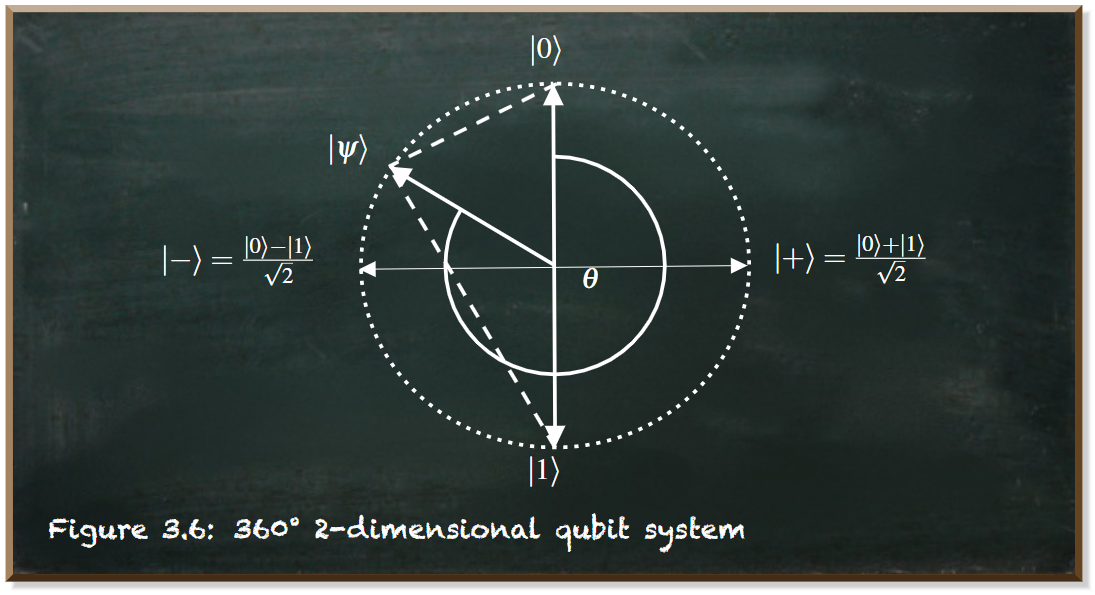This post is part of the book: Hands-On Quantum Machine Learning With Python.
A classical bit can be either 0 or 1. A quantum bit (called a qubit), by contrast, can be in a state of superposition. The quantum superposition is a linear combination of 0 and 1. But the qubit can only be in a superposition as long as you don’t measure it. Once you measure your qubit, it instantly collapses to either 0 or 1. Just like a classical bit.
In this post, we have a closer look at the quantum superposition and how its state determines whether we will measure the qubit as 0 or 1.
There are two possible measurements of a qubit: 0 and 1. Therefore, the qubit is a two-dimensional quantum system. Each dimension is denoted by a standard basis vector. In quantum computing, we use the Dirac notation. It represents a column vector by the ket that looks like “|ψ⟩”:

The state of the qubit is represented by the superposition of both dimensions. This is the qubit state vector |ψ⟩ (“psi”).

α and β are the probability amplitudes of the states |0⟩ and |1⟩. Their squares denote the probabilities of measuring the qubit as 0 (given by α^2) or 1 (β^2) respectively.
#programming #python #computer-science #mathematics #data-science
